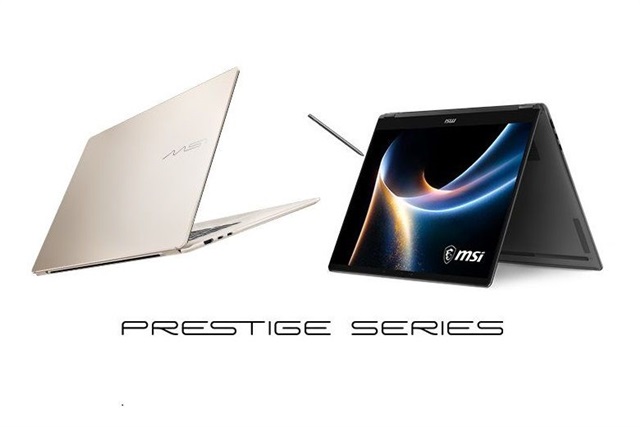Global Innovation Forum Brings Together Seven CES-Participating Countries
The Seoul Business Agency (SBA), a small business support organization under the Seoul Metropolitan Government dedicated to revitalizing the startup ecosystem and discovering promising startups, announced that it will participate in CES 2026, the world's largest IT exhibition, by establishing and operating the Seoul Integrated Pavilion. In addition, following last year's initiative, SBA plans to host and expand the first-ever CES-based inter-country collaborative networking event, the "Global Innovation Forum," which aims to drive convergence across the global startup ecosystem.The forum is designed to provide Seoul-based startups with outstanding technological capabilities and growth potential, and a platform to engage directly with key players in the global startup ecosystem. By doing so, the event seeks to turn CES participation into tangible global business opportunities and help startups shine on the world stage. In particular, the forum is expected to attract strong interest from startups and ecosystem stakeholders seeking international expansion, as it offers a rare opportunity to experience investment, promotion, and networking in a single setting.The Global Innovation Forum was conceived as a networking platform that uses CES, the world's largest exhibition, as a bridge to enable startup ecosystems from different countries to communicate organically beyond national borders. The initiative began in 2025 under the name "Seoul Innovation Forum," when five national pavilions-Japan, the Netherlands, Switzerland, Taiwan, and the Republic of Korea (Seoul)-collaborated for the first time. As the inaugural event built on solidarity among Eureka Park-participating countries at CES, the Seoul Innovation Forum was considered particularly meaningful. It brought together key startup ecosystem players from each country to explore practical collaboration measures, earning positive evaluations as a successful first step toward enhancing competitiveness as global startups.A "national pavilion" refers to an exhibition pavilion established and operated by a national institution participating in CES.Building on this success, the event has been rebranded as the "Global Innovation Forum" starting in 2026 to provide participating startups with more stable and expanded opportunities for global collaboration. The highlight of the forum, the IR Pitching Competition, has been significantly strengthened through an enhanced judging panel. In addition to promoting technology through global media, the competition now includes rigorous business evaluations by leading global venture capital firms. Through this approach, participating companies are expected to gain opportunities for accelerated growth, expand brand awareness, and attract practical investment and market validation in a single venue.The 2026 Global Innovation Forum will be held in collaboration with startup support organizations from seven countries. The event is jointly supported by the host organization, Seoul Business Agency (SBA) of the Republic of Korea, Taiwan Tech Arena (TTA), Switzerland Global Enterprise (S-GE), Israel Economic and Trade Office, Japan External Trade Organization (JETRO), Québec Government Office of Canada, and Business France, raising expectations for a successful outcome.The forum will open with an IR pitching competition featuring startups selected by each participating country. The competition serves as a core program that draws strong attention from investors, media, and industry stakeholders, as promising startups carefully selected by national startup support organizations present their technologies and business models on the global stage. Each participating country-the Republic of Korea, Taiwan, Switzerland, Israel, Japan, Canada, and France-will showcase its leading startups before global investors and media, providing opportunities to expand international partnerships. Through this IR pitching competition, which combines media reach with the expertise of venture capital firms, participating companies are expected to achieve tangible outcomes beyond simple promotion, including market validation and investment connections.As the centerpiece of the forum, the IR pitching competition will serve as a platform for outstanding startups from seven countries, including Korea, Japan, and France, to demonstrate their value on the global stage. This platform, where national innovation capabilities converge, will act as a bridgehead for expanding international partnerships. Through an advanced evaluation process involving both media and venture capital firms, participating companies are expected to achieve meaningful results in brand recognition and capital linkage simultaneously.Award-winning companies that demonstrate innovative technologies and vision during the competition will receive prize money and trophies according to their respective award categories. The awards are divided into the Grand Award (first place), Scale-up Award (second place), and Impact Award (third place), with prize money of USD 3,000, USD 2,000, and USD 1,000, respectively.In addition, the forum will host panel discussions featuring representatives from each participating country, creating a knowledge-sharing platform to discuss the latest trends and support know-how in the global startup ecosystem. This is expected to go beyond individual company scale-up efforts and serve as an opportunity to strengthen policy alignment among countries. The networking session, where participants can interact freely, will be a key element in turning forum participation into tangible business outcomes. The teamwork among media, venture capital firms, startups, and startup support organizations is expected to open new opportunities for market entry for participating startups.Hyunwoo Kim, President and CEO of the Seoul Business Agency, presented his vision for the forum, stating that SBA aims to grow the event into a representative collaboration model that connects the global startup ecosystem into one through CES.

